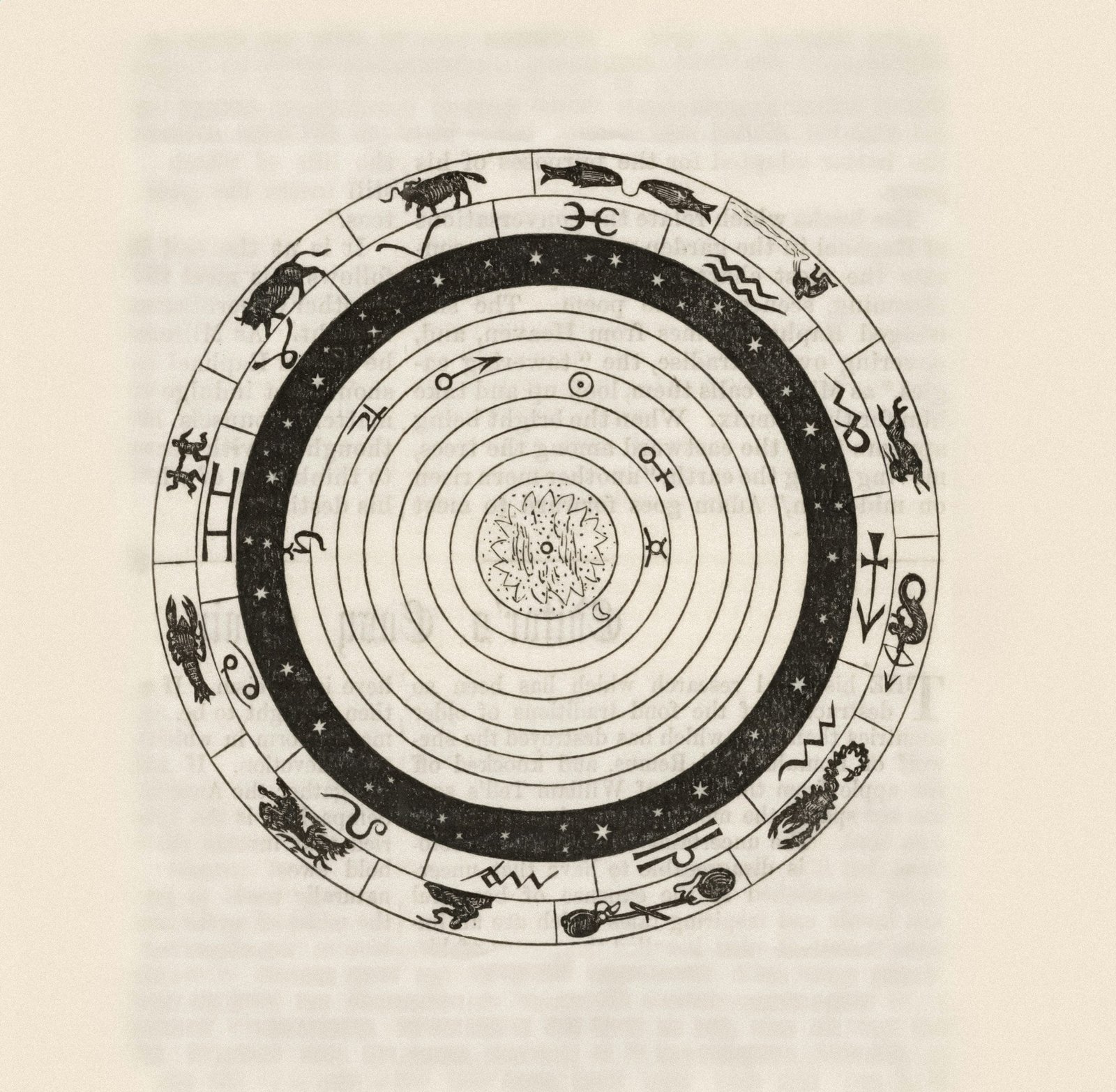Understanding the Eighth House
The eighth house in astrology holds a significant position within a birth chart, embodying deep themes related to transformation, intimacy, mortality, and shared resources. Traditionally, this house is often linked to the cycles of death and rebirth, illustrating how individuals navigate the more profound aspects of life and relationships. It is within this sphere that one can explore the nuances of emotional exchanges, as well as the complexities of personal desires and fears.
In terms of transformation, the eighth house often signifies pivotal moments in an individual’s life that incite change, whether through personal crises or relationships that push for evolution. This results in a journey of self-discovery, where the native confronts core issues that influence their personal growth. The significance of this house is underscored by its association with the astrological planet Pluto, which governs transformation and regeneration, indicating a deeper psychological process at play.
Moreover, sexuality is another crucial aspect of the eighth house, inviting exploration beyond mere physical attraction. It encompasses emotional connections, revealing how intimacy can act as a catalyst for both healing and growth. The interactions within this house often reflect an individual’s relationship with power dynamics, especially in partnerships where shared resources come into play. These dynamics can prompt questions about trust, dependence, and control, shaping how individuals engage in cooperative ventures.
Thus, the eighth house serves as a vital component in the architecture of a birth chart, influencing individual interactions and experiences with others. By understanding this house’s intricate meanings, one may gain insights into their transformative life experiences and personal connections, enriching their overall astrological interpretation.
What Does It Mean to Have an Empty Eighth House?
In astrology, an empty house refers to a sector in the natal chart that has no planets located within it at the time of a person’s birth. The eighth house is often associated with profound themes such as transformation, shared resources, intimacy, and even matters related to life and death. When this house is empty, it signifies that the specific energies and characteristics traditionally attributed to the eighth house might not be as prominent in an individual’s life. This absence, however, does not imply a lack of significance; rather, it suggests a different relationship with the themes governed by this aspect of the chart.
Individuals with an empty eighth house may find that the experiences associated with transformation or intimacy are navigated differently compared to those with multiple planets in this house. The absence of planetary influence can allow an individual to approach these topics with a sense of freedom, as they may not feel as compelled to engage in the emotional tumult typically accompanied by the eighth house matters. Instead, they might rely on other aspects of their chart to influence how they handle shared resources or partnerships, leading to a more controlled and less emotionally charged experience.
This configuration can also imply a degree of detachment from the more intense experiences of life, such as crises of transformation or deep emotional bonds. It is essential to consider the entire chart to understand fully how this empty house interacts with other placements, as they may provide insights into how one approaches themes of intimacy and change. Additionally, the ruling planet of the eighth house and its aspects can significantly influence the way an individual interacts with the energies typically associated with this domain. By examining the comprehensive astrological chart, one can glean a richer understanding of the implications of having an empty eighth house.
Astrological Interpretations of an Empty Eighth House
In astrology, the eighth house is traditionally associated with the themes of intimacy, transformation, shared resources, and even matters surrounding life and death. It serves as a significant area in the natal chart, often highlighting personal connections, inheritances, and deep psychological experiences. When this house appears empty, astrologers offer various interpretations, ranging from strengths to potential weaknesses in a person’s life.
One prevailing interpretation is that an empty eighth house may suggest a lesser emphasis on the emotional and psychological depth typically linked to this house. This could mean that individuals with such a placement may approach intimate relationships with a certain degree of detachment or may not find themselves deeply engaged in transformational experiences. However, this absence does not necessarily indicate emptiness in relational or financial areas; rather, it may point to different priorities in life where these themes are less highlighted.
Another perspective posits that an empty eighth house can be a source of strength. Individuals may possess an innate ability to handle shared resources signifying financial steadiness or independence from reliance on others. It may also indicate an approach to life that is less focused on crisis management and more on cultivating stability. Astrologers might suggest that these individuals may navigate intimate relationships with a greater sense of autonomy, potentially reducing dependency on partners for emotional fulfillment or financial security.
Moreover, an empty eighth house could reflect a person’s unique outlook toward transformation. Rather than engaging in intense emotional upheavals, these individuals may prefer a more measured approach. They might value practical change over the tumultuous transformations others experience. Thus, while an empty eighth house might initially appear as a lack of focus on specific life themes, it often embodies an alternative strength that shapes personal experiences and interactions.
The Impact on Personal Relationships
The eighth house in astrology is often associated with shared resources, intimacy, and deep emotional connections. When this house is empty, it can significantly influence how individuals engage in personal relationships, particularly in terms of bonding and intimacy. An empty eighth house suggests that an individual may experience less emphasis on the deeper psychological aspects typically associated with partnerships. This can lead to a more superficial approach to relationships, where lighter interactions take precedence over profound emotional attachments.
Individuals with an empty eighth house may find that they prioritize independence and autonomy within their relationships. While this can lead to fulfilling experiences, it may also pose challenges when their partners seek deeper emotional engagement. The desire for freedom might create friction if one partner craves an emotionally intensive connection, leading to potential misunderstandings. The absence of planets in the eighth house could also mean a reduced focus on sharing vulnerabilities, which is often essential for building lasting, intimate relationships.
Additionally, an empty eighth house can alter one’s approach to issues of trust and commitment. People may exhibit a tendency to avoid deep commitments or could feel uncomfortable discussing sensitive topics, which can prevent genuine intimacy from developing. The approach to shared resources, including finances or emotional support, may also be less collaborative, relying more on individualistic efforts rather than mutual understanding and compromise.
Ultimately, while there are potential challenges stemming from an empty eighth house, personal relationships can still flourish. Awareness of these dynamics can help individuals navigate their interactions more effectively, fostering connections that align with their needs while respecting the emotional boundaries inherent to their nature.
Financial Implications of an Empty Eighth House
The eighth house in astrology plays a crucial role in determining an individual’s relationship with shared resources, inheritances, and external financial matters. An empty eighth house signifies the absence of planets, which can influence how financial situations are navigated. While some may perceive this as a disadvantage, it is essential to understand the strengths and potential blind spots associated with this aspect of one’s astrological chart.
Individuals with an empty eighth house may find themselves more independent in their financial dealings. Without strong planetary influences, they may approach financial decisions with a rational mindset, relying on personal resources and self-sufficiency rather than external support. This independence can foster a sense of control over finances, encouraging responsible budgeting and cautious investment strategies.
Moreover, those with an empty eighth house may experience fewer emotional entanglements related to money matters. This emotional distance can allow for clear-headed financial planning, as they are less likely to be swayed by the emotional pressures that often accompany inheritance disputes or shared financial commitments. However, this independence can also create blind spots, particularly in collaborative financial projects. Individuals may underestimate the importance of teamwork and shared decision-making, leading to potential challenges when engaging in joint investments or partnerships.
Another significant aspect is the potential lack of focus on long-term financial strategies. Since the eighth house governs matters related to shared wealth and investments, individuals may not prioritize estate planning or wealth management as much as those with a populated eighth house. This oversight could result in missed opportunities for financial growth and stability over time.
Ultimately, understanding the implications of an empty eighth house allows individuals to leverage their strengths while becoming aware of the aspects that require more attention. By recognizing these dynamics, individuals can make informed decisions that contribute positively to their financial landscape.
Transformational Experiences Without Planetary Influence
In astrology, the eighth house is often associated with transformation, rebirth, and deeper emotional experiences. Traditionally, it is seen as the realm where one confronts the unknown, such as death, intimacy, and shared resources. However, for individuals with an empty eighth house, the process of transformation can unfold differently, creating unique pathways towards personal growth and self-discovery. While some may perceive the lack of planets in this house as a void, it can actually signify an opportunity for a more self-directed journey of evolution.
A person with an empty eighth house may experience transformational moments through external influences rather than internal planetary dynamics. This might include significant life events, relationships, or societal changes that prompt introspection and growth. These individuals may seek transformative experiences actively, perhaps through travel, deep psychological inquiry, or engagement in practices such as therapy or spiritual exploration. The absence of planets does not diminish the potential for self-discovery; rather, it creates a canvas where personal evolution is influenced more by external circumstances and conscious choices.
Moreover, personal transformation for those with an empty eighth house often involves a strong sense of autonomy. This independence can foster resilience and a willingness to embrace change without the typical astrological indicators that might dictate their evolution. Their journey may emphasize a personal philosophy and values rather than a reliance on astrological projections. Through curiosity and exploration, individuals with an empty eighth house can cultivate profound insights about themselves, engaging with the themes of intimacy, power, and emotional depth in ways that resonate with their unique life experiences.
Thus, while the eighth house traditionally signals avenues of growth through intense emotional experiences, an empty eighth house allows for alternative methods of transformation, highlighting self-reliance and purposeful exploration in the journey of life.
Chiron and Other Astrological Considerations
In astrological practice, the presence of Chiron, often referred to as the “wounded healer,” plays a crucial role in understanding an empty eighth house. Chiron symbolizes our deepest wounds and the potential for healing. When positioned in relation to an empty eighth house, Chiron can highlight the individual’s experiences with intimacy, transformation, and shared resources. This celestial body prompts individuals to confront their vulnerabilities, particularly concerning themes of loss, emotional depth, and regeneration, ultimately fostering a journey of healing and self-discovery.
Moreover, transits and aspects involving other planets can further illuminate the themes associated with an empty eighth house. For instance, when planets like Pluto or Mars transit the eighth house or create harmonious aspects to its ruler, they may activate latent potential or bring forth significant transformative experiences. Individuals with an empty eighth house might find themselves facing profound changes or life events that demand a deep emotional response, thereby enabling them to explore their psychological depths and confront their fears.
Additionally, aspects to the eighth house from benefic planets, such as Jupiter or Venus, can provide opportunities for growth and healing. These planets can offer support and enhance one’s ability to form meaningful connections and share resources with others. Conversely, challenging aspects may indicate difficulties in navigating intimacy or the complexities surrounding shared finances. Understanding how Chiron and these transiting planets interact with an empty eighth house can provide valuable insights into how individuals may approach themes of healing, transformation, and emotional vulnerability in their lives.
Embracing the Strengths of an Empty Eighth House
An empty eighth house in astrology can often be perceived as a challenge; however, it also offers a unique array of strengths and opportunities for personal growth. Those with this astrological configuration are encouraged to embrace their autonomy and exercise personal agency in their lives. The absence of planetary influences in the eighth house can create a sense of independence, allowing individuals to navigate their spiritual and emotional landscapes without the weight of external pressures.
One of the most notable advantages of an empty eighth house is the opportunity for autonomy in financial matters. Unlike individuals with multiple planets in this house, who may be subject to various influences, those with an empty eighth possess the freedom to approach finances on their own terms. This can lead to a strong sense of personal responsibility, promoting sound financial decision-making. The lack of planetary influence encourages individuals to establish their own values and principles regarding money, fostering a healthier relationship with their financial resources.
Additionally, an empty eighth house can cultivate the practice of setting healthy boundaries in relationships. Without overwhelming emotional baggage, individuals may find they have the clarity necessary to engage in relationships that genuinely nurture their well-being. This configuration allows for the exploration of intimate connections based on mutual respect and understanding, rather than dependency or emotional turmoil. A strong sense of self-awareness emerges, enabling individuals to navigate partnerships with a discerning eye while prioritizing their emotional needs.
Ultimately, embracing the strengths associated with an empty eighth house can lead to profound personal development. Individuals are empowered to take charge of their finances, establish healthy boundaries, and seek growth outside the conventional limitations imposed by astrological influences. By focusing on these positive attributes, one can navigate the complexities of life with confidence and resilience.
Conclusion: Embracing Individual Astrological Paths
Astrology serves as a profound tool for self-discovery and understanding one’s life journey. Each astrological configuration, including an empty eighth house, presents unique challenges and gifts that influence individual experiences. The empty eighth house, often viewed with curiosity and sometimes trepidation, holds significant implications in an astrological chart. It emphasizes personal empowerment, inviting individuals to explore their emotional depths and forge connections with the transformative aspects of life without the complexities associated with heavily aspected houses.
This astrological position can inspire individuals to approach themes of intimacy, shared resources, and transformation from a distinctive angle. While some might perceive the absence of planets in the eighth house as a void, it can instead symbolize a space ripe for exploration, allowing individuals to establish their own parameters for deep emotional connections and transformations. The potential for personal growth in this aspect of astrology is noteworthy, as it encourages reliance on one’s inner resources and strengths.
Additionally, those with an empty eighth house may find themselves less influenced by the expectations and emotional entanglements that often accompany this house’s themes. Instead, they can navigate their relationships and transformations in ways that are authentic to their unique astrological paths. This autonomy allows for a more conscious engagement with the deeper aspects of life, enabling a distinctive journey marked by self-awareness and empowerment.
If you find yourself in a similar position, embrace the exploration of your individuality, recognizing that every chart, including one with an empty eighth house, offers layers of meaning. Reflecting on your astrological path can empower you to cultivate relationships and experiences that resonate with your true essence, guiding you through the intricacies of life with intention and clarity.



